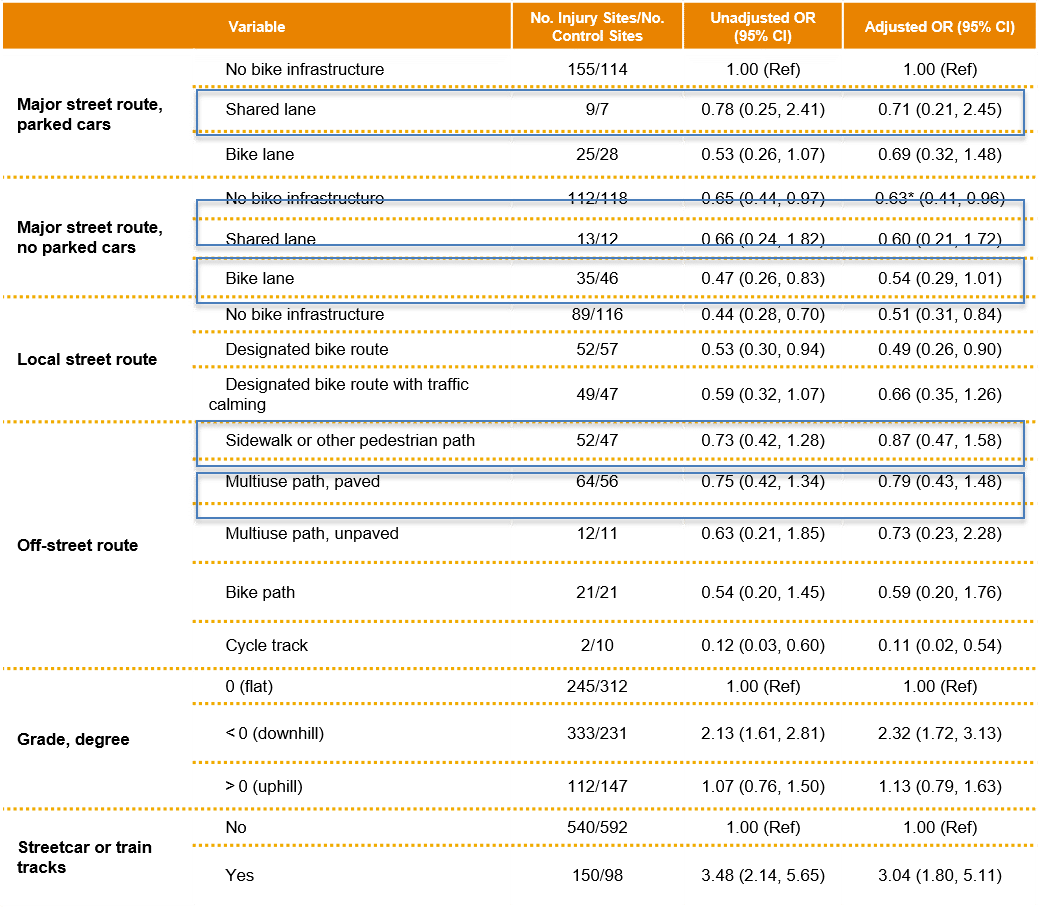Cycling infrastructure can help improve cycling safety and increase cycling levels. There is an important relation between the type of route and injury risk:
- Cycle tracks and protected bike lanes have the lowest injury risk. Cycle tracks and protected bike lanes are on-street cycle lanes that are physically separated from motor vehicles by raised curbs, bollards, or concrete barriers.
- Painted bike lanes on major streets without any parked cars, residential street bike routes, and bike paths in parks are also safer types of infrastructure.
- Sidewalks and multi-use paths, on the other hand, present higher risks than bike-only paths and bike lanes.
Safer routes tend to also be preferred routes, so safer infrastructure should encourage cycling while reducing injury rates. For instance, U.S. and European cities with higher rates of cycling have fewer overall traffic crashes. These cities also have high-quality cycling infrastructure, high street connectivity and compact urban form.
A study from University of Cambridge shows that 85 percent of the effect on increasing cycling is explained by use of the infrastructure. The study identified changes in perceptions of the route to work and use of the cycle path, as potential mediators. The table below outlines additional findings of the study.

References
Cities Safer by Design
https://ecf.com/news-and-events/news/want-safer-cycling-think-infrastruc…
http://ajph.aphapublications.org/doi/full/10.2105/AJPH.2012.300762
https://www.sciencedirect.com/science/article/pii/S0091743516300214
http://road.cc/content/news/186152-cycle-infrastructure-responsible-85
Chart: Teschke et al, 2012